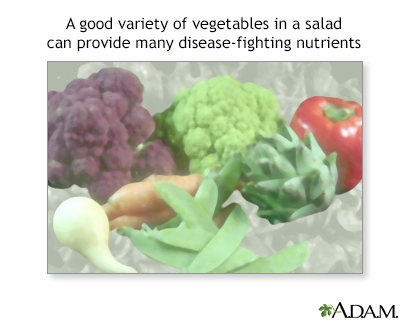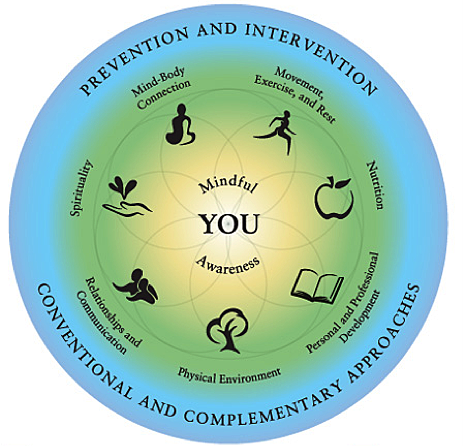Tips for a Healthier You in 2018
It’s a new year, and for many, that means new goals. Each year, millions of Americans make New Year’s resolutions that they forget or fail to keep up by…
Update your location to show providers, locations, and services closest to you.
Salads can be a good way to get your important vitamins, minerals, and fiber. However, not all salads are healthy or nutritious. It depends on what is in the salad. It is OK to add small amounts of dressing and toppings, however, if you overdo it with high-fat or high-sugar add-ins, your salad may cause you to exceed your daily calorie needs and contribute to weight gain.
Prepare salads with colorful vegetables. If you have plenty of fresh vegetables in the salad, then you are getting healthy, disease-fighting nutrients.
Be mindful of the extra items you add to your vegetable salads, which may be high in saturated fat, sodium, or sugar.

Hall JE, Hall ME. Dietary balances; regulation of feeding; obesity and starvation; vitamins and minerals. In: Hall JE, Hall ME, eds. Guyton and Hall Textbook of Medical Physiology. 14th ed. Philadelphia, PA: Elsevier; 2021:chap 72.
Mason JB, Booth SL. Vitamins, trace minerals, and other micronutrients. In: Goldman L, Schafer AI, eds. Goldman-Cecil Medicine. 26th ed. Philadelphia, PA: Elsevier; 2020:chap 205.
It’s a new year, and for many, that means new goals. Each year, millions of Americans make New Year’s resolutions that they forget or fail to keep up by…
It’s the same song and dance every year – making a list of resolutions for the upcoming new year with the goal of checking every item off the list by the end…
